- Home
- James Rollins
Ghost Ship: A Sigma Force Short Story Page 4
Ghost Ship: A Sigma Force Short Story Read online
Page 4
“Any ideas?”
“Somewhere that’s still warm and tropical.” She lifted her cheek, staring pointedly at him. “But without box jellyfish, saltwater crocodiles, or stonefish.”
“Like where.”
“I was thinking Hawaii . . . maybe Maui.”
“Really? Aren’t those islands too tame and boring for you?”
She shrugged. “I’ve never been there. And right about now, boring sounds perfect.”
“Then a Hawaiian vacation it is.” He settled his face back into his doughnut. “Surely nothing can go wrong there.”
What’s True, What’s Not
At the end of my full-length novels, I love to spell out what’s real and what’s fiction in my stories. I thought I’d briefly do the same here.
CAPE TRIBULATION. I was lucky enough to spend some time in this area near Port Douglas in Queensland and always wanted to set a story here. It’s truly a magical place, where the rainforest meets the Coral Sea. I also took a horseback ride to the beach featured in this story, where I watched a huge saltwater crocodile saunter across the sand and into the surf. While there, I also became enamored with the history of the region. The site was indeed named by Captain Cook after his fateful accident on the nearby reefs. So I thought it would be fun to tell a story of a ship that suffered a similar, if more tragic, fate.
THE TRIDENT. While the ship featured in this short story is purely fictional, I based its fateful tale on the histories of two real convict ships: the Success and the Hive. Their combined stories involved mutiny, gold, and lost shipwrecks. So I borrowed their tales for this adventure.
THE GREAT BARRIER REEF. As I was setting this story here, I couldn’t help but mention the tragic bleaching that is currently affecting two-thirds of the reef’s coral, covering a swath almost nine hundred miles long. The reef is home to many endangered species, along with four hundred types of coral and fifteen hundred species of fish. It’s an invaluable habitat, one that three hundred million people rely on for food, employment, and livelihood. So let’s not lose it.
ANFOG GLIDERS. Yep, those yellow research torpedoes are real . . . though I may have stretched their capabilities a bit. But not by much!
WHAT’S NEXT?
At this story’s conclusion, Seichan makes a fateful decision to head to Hawaii, specifically Maui. Gray has, of course, cursed them by declaring nothing can go wrong. Their sabbatical from Sigma Force is about to come to a crashing end—and nothing will ever be the same for the two of them. Already forces are in motion, fueled by an ancient horror known only as the Demon Crown. So hold tight, and I hope you enjoy the wild ride to come!
The Demon Crown
Keep reading for a sneak peek at the next Sigma Force adventure
The Demon Crown
Coming in 2017 from William Morrow
Prologue
11:07 a.m. CET December 31, 1903
Genoa, Italy
With time weighing heavily upon its passengers, the carriage climbed recklessly up from the snow-swept city of Genoa. It jolted hard around a sharp twist in the narrow street.
Seated in the back, Alexander Graham Bell groaned. He was still recuperating from a fever following the transatlantic voyage with his wife. To make matters worse, upon arriving in Italy two weeks ago, nothing had gone smoothly. At every turn, Italian authorities thwarted his plans to secure the remains of James Smithson, the man who had founded the Smithsonian Institution. To facilitate this bit of grave-robbing, he had been forced to act as both spy and ambassador, doling out bribes and deceit in equal measure. It was a game for a much younger fellow, not a man in his mid-fifties. The stress had taken its toll.
His wife clutched his wrist. “Alec, perhaps we should ask the driver to slow down.”
He patted her hand. “No, Mabel, the weather is turning. And the French are breathing hotly down our necks. It’s now or never.”
Three days ago, just as he had secured all the proper permits, some distant French relatives of Smithson had wormed out of the woodwork to stake a claim on his body, little knowing what truly was at stake. Before this French roadblock could become entrenched, he had argued with Italian authorities that since Smithson had left the entirety of his estate to the United States, such an endowment must surely encompass his very body. He solidified his position with fistfuls of lira plied into the right hands, while at the same time categorically declaring—falsely—that President Theodore Roosevelt supported his mission.
Though he had prevailed in this subterfuge, he could not count on it lasting much longer.
It’s indeed now or never.
He placed a palm over his breast pocket, where a fragment of paper was folded, its edges still charred.
Mabel noted his hand. “Do you believe it could still be there? In his grave, buried with his body?”
“We have to be sure. Someone came close to destroying this secret half a century ago. We can’t let the Italians finish the job.”
In 1829, James Smithson was buried by his nephew in a small cemetery atop a seaside promontory in Genoa. At the time, the graveyard was owned by the British, but the Italians had retained a claim to the ground beneath it. Over the past few years, a neighboring quarry had been slowly eating its way through this hill, and now the company wanted to take it all down, including the cemetery.
Upon learning of the threat to the bones of the founder of the Smithsonian, the museum’s board of regents had debated whether to rescue those remains before they were blasted into the sea. It was during that time that an old letter came into Alexander’s possession. It was written by the Smithsonian Institution’s first secretary, Joseph Henry, the man who oversaw the building of the Castle and who would eventually die within its walls.
“Henry was no fool,” he mumbled to himself, stroking his thick beard.
“I know how much you admired him,” Mabel consoled. “And valued his friendship.”
He nodded.
Enough to follow his instructions to this gravesite in Italy.
In the letter written the year before his death, Henry told a tale that traced back to the Civil War, when the tides were turning against the South. Henry had come upon a strange notation in one of Smithson’s old diaries. He only stumbled upon it because he had been seeking additional documentation concerning Smithson’s endowment, trying to discern why the man was so generous to a country he had never even visited. During that inquiry, he came across a single exception to the estate, something not bequeathed to the United States. While the man’s entire mineral collection—his lifetime work—was preserved at the Castle, one artifact was held back. It was an object that Smithson ordered his nephew to bury with his body upon his death.
The oddity drew Henry’s interest, enough for him to diligently search the man’s journals and diaries. He eventually found one reference to it, to something Smithson called The Demon Crown. Smithson expressed regret at unearthing it during a trip to a salt mine near the Baltic Sea. He claimed it could free something horrific.
“‘The very hordes of Hell upon this World . . .’” Alexander whispered, quoting from a page of Smithson’s diary.
“Do you truly believe that’s possible?” Mabel asked.
“Somebody believed it enough during the Civil War to try to burn the Smithsonian to the ground.”
Or so Henry had thought.
Upon discovering Smithson’s secret, Henry had discussed it with some fellow board members, even wondering aloud if this artifact might be used as some form of weapon. Then three days later, the mysterious fire broke out at the Castle, which seemed to specifically target Smithson’s heritage, both his papers and his mineral collection.
From the timing of this act, Henry suspected someone at the Smithsonian had betrayed his fears to the Confederacy. Luckily, Henry had kept Smithson’s journal that referenced the artifact in his own office, so it had been spared the worst of the flames, though the cover was charred and sections lost. Still, Henry decided it best to keep this reco
very secret, informing only a trusted circle of allies. The group formed a secret cabal within the museum, and over the passing years, they were entrusted with the Smithsonian’s darkest secrets, information often kept even from the president.
One example of that was the mysterious symbol discovered tattooed upon the wrist of a scoundrel whom Henry finally connected to the fire. The man died before he could be questioned, slicing his own throat with a dagger. Henry had sketched a copy of that symbol in his letter, serving as a warning for future generations.
It looked like a variant of the masonic symbol, but no one knew what group this particular incarnation represented. Decades later, when Smithson’s grave was threatened, Henry’s group approached Alexander and showed him Henry’s letter. They recruited him to their cause, knowing it would take someone of his prominence and notoriety to pull off this bit of skullduggery on Italian soil.
Though Alexander was not sure what he would find—if anything—in Smithson’s grave, he had agreed to undertake this task, even using his own money to finance the mission. No matter the outcome, he couldn’t refuse.
I owe it to Henry.
The carriage bumped around the last turn and reached the summit of the promontory. The vantage offered a wide view across Genoa to its harbor, which was crowded with coal-laden winter barges, so many that it looked as if you could cross the bay by hopping from one to the other. Closer at hand, the small cemetery beckoned, surrounded by white walls crowned with shards of broken glass.
“Are we too late?” Mabel asked.
He understood her concern. A corner of the cemetery was already gone, tumbled away into the neighboring marble quarry. As Alexander climbed out of the carriage into the bitter wind, he spotted what could only be a pair of coffins shattered below. He shivered, but it was not from the cold.
“Let us be quick,” he warned.
He led his wife through the cemetery gate. Ahead, he spotted a clutch of men huddled in thick coats. The party consisted of a few government lackeys and a trio of laborers. They gathered near a prominent sarcophagus cordoned off by a spiked iron fence. Alexander hurried over, bending against the wind, one arm around his wife.
He nodded to the American consul in attendance, William Bishop.
Bishop stepped closer and tapped his watch. “I heard a French lawyer is on a train from Paris. We should be prompt here.”
“Agreed. The sooner we’re aboard the Princess Irene with the bones of our esteemed colleague and headed back to America, all the better.”
As snow began to fall, Alexander stepped toward the gravesite. A gray marble pedestal bore a simple inscription.
Bishop crossed to one of the Italian representatives and spoke briefly. In short order, two of the laborers set about using crowbars. They cracked the seal on the tomb’s marble lid and lifted it free. Nearby, the remaining worker readied a casket made of zinc. Once Smithson’s bones were transferred into it, the box would be soldered shut for its transatlantic voyage.
As the men worked, Alexander stared again at the inscription, his frown deepening. “That’s odd.”
“What is?” Mabel asked.
“It states here that Smithson was seventy-five years old when he died.”
“So?”
He shook his head. “Smithson was born June fifth, 1765. By my calculation, that means he was only sixty-four when he died. That inscription is wrong by eleven years.”
“Is that significant?”
He shrugged. “I have no idea, but I imagine his nephew would have known his uncle’s true age, especially as he was setting it into stone here.”
Bishop waved Alexander closer to the tomb as the sarcophagus’s lid was finally carried off. “Perhaps you should do the honor.”
While he appreciated the gesture, he considered balking, but he had already come too far to turn back now.
In for a penny, in for a pound.
He joined Bishop before the open tomb and peered inside. The wooden casket inside had long rotted away, leaving a blanket of heavy dust over what was clearly a set of bones. He reached reverently inside, parted the debris, and lifted the skull, which was surprisingly intact. He almost expected it to crumble as he gripped it.
Stepping back, he stared into the eye sockets of the Smithsonian’s founder.
As stated on the inscription, Smithson was an esteemed fellow of the British Royal Society, one of the world’s most distinguished scientific groups. In fact, the man was tapped to join this society the same year he graduated from college. Even at such a young age, his scientific talent had been well regarded. Afterward, as a chemist and a mineralogist, he spent much of his life traveling throughout Europe collecting mineral and ore samples.
Yet, so much remained unknown about the man.
Like why he left his fortune and collection to the United States?
Still, one fact was indisputable.
“We owe you so much,” Alexander murmured to the skull. “It was your generosity of spirit that changed forever our young country. It was your legacy that taught America’s greatest minds to set aside petty ambitions and work together for the collective good.”
“Well spoken,” Bishop said, holding out his gloved palms. The weather was growing harsher by the minute, and the consul clearly wanted this matter finished.
Alexander didn’t argue. He handed over the skull so it could be transferred to the zinc casket and returned his attention to the tomb. He had already noted a rectangular shape in one corner.
Reaching in again, he waved away the dust to reveal a small metal chest.
Could this be the source of such consternation?
It took all his strength to lift the box out of the tomb. It was dreadfully heavy. He hauled it aside and balanced it atop a nearby gravestone. Bishop ordered the workers to finish transferring the bones, then returned to his side, as did Mabel.
“It that it?” his wife asked.
Alexander turned to Bishop. “Let me remind you again. There is to be no official or unofficial mention of this object. Is that understood?”
Bishop nodded and glanced to the rest of the party, who were busy at work. “You’ve paid well for their silence.”
Satisfied, Alexander unlatched and opened the lid of the chest. Inside, a bed of sand cradled something the size and color of a pumpkin. He stared at it breathlessly for a moment.
“What is it?” Mabel asked.
“It . . . it appears to be a chunk of amber.”
“Amber?” Bishop’s voice held a note of avarice. “Is it valuable?”
“Somewhat. Though nothing exceptional. It’s basically fossilized tree sap.” Frowning, he leaned closer. “Bishop, would you ask that worker if we could borrow his lantern?”
“Why—?”
“Just do it, man. We don’t have all day.”
Bishop rushed over.
Mabel stood at his shoulder. “What do you think, Alec?”
“I can make something out. Through the amber. But just barely.”
Bishop returned, lantern in hand.
Alexander took it, twisted the flame brighter, and brought it close to the translucent chunk of amber. It glowed a rich honey, revealing what it hid at its heart.
Mabel gasped. “Are those bones?”
“I believe so.”
It seemed Smithson’s tomb held more than just his own moldering remains.
“But what are they?” Bishop asked.
“No idea. But surely something prehistoric.”
He leaned closer, squinting. At the heart of the amber rested a small, fist-size triangular skull bearing a prominent row of sharp teeth. It looked distinctly reptilian, maybe those of a small dinosaur. A halo of smaller bones floated within the glowing stone. He pictured ancient tree sap flowing over this creature’s old grave, stirring up its bones and forever trapping them in this position.
The tinier bones had come to form a ghastly halo above the skull.
Like a crown.
He glanced to Mabel, wh
o took a deep breath as she recognized the pattern. She knew, too, that this must be what Smithson wrote about—what he aptly named the Demon Crown.
“Impossible,” his wife whispered.
He nodded. In his pocket, he held a burned page from Smithson’s diary, upon which the man had scribbled a remarkable claim about this artifact.
It had to be impossible, as his wife said.
He pictured Smithson’s words, what the dead man had written concerning this artifact.
Be warned, what the Demon Crown holds is very much alive . . .
Alexander felt an icy trickle of terror.
. . . and ready to unleash the very hordes of Hell upon this world.
8:34 p.m. EDT November 3, 1944
Washington, D.C.
“Careful of the rats,” James Reardon warned at the entrance door to the tunnel. “Some real bruisers down here in the dark. One bit off the end of a worker’s thumb last month.”
Archibald MacLeish suppressed a shudder of disgust as he hung his jacket on a hook next to the door. He wasn’t exactly outfitted for an excursion underground, but he had been late getting here, as an evening meeting at the Library of Congress had run long.
He stared down the five steps that led to the old subterranean tunnel connecting the Smithsonian Castle to its neighbor across the mall. The newer museum, the Natural History Building, was completed in 1910, when ten million objects had been ferried by horse-drawn cart from the Castle to their present home. For a decade afterward, the two buildings had shared utilities via this seven-hundred-foot-long tunnel, but with later modernizations, the passageway was eventually closed off and seldom tread, except by the occasional maintenance crew.
And apparently some overgrown vermin.
Nevertheless, Archibald had believed there might be a new use for this abandoned tunnel. As the current Librarian of Congress and head of the Committee for the Conservation of Cultural Resources, he had been tasked to secure the nation’s treasures at the start of World War II. Fearing bombing raids like those that had beset London during the Blitz, he had personally overseen the shipment of priceless documents—the Declaration of Independence, the Constitution , even a copy of the Gutenberg Bible—to the safety of Fort Knox. Likewise, the National Gallery of Art had transferred their most prized masterpieces to the Biltmore House in North Carolina, while the Smithsonian had buried the Star-Spangled Banner deep in Shenandoah National Park.

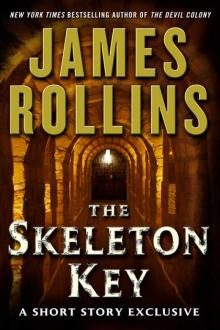 The Skeleton Key
The Skeleton Key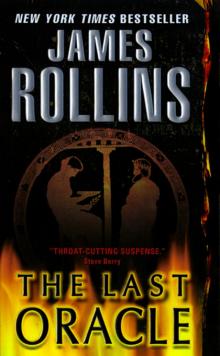 The Last Oracle
The Last Oracle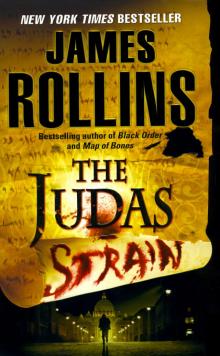 The Judas Strain
The Judas Strain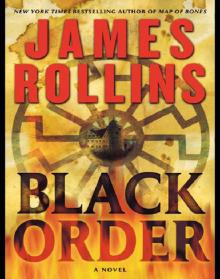 Black Order
Black Order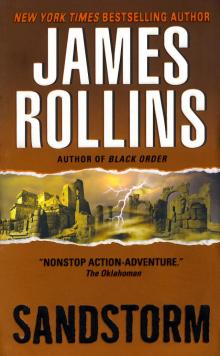 Sandstorm
Sandstorm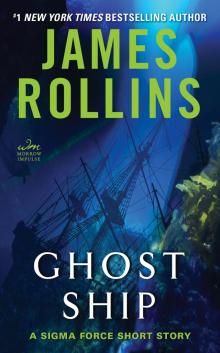 Ghost Ship
Ghost Ship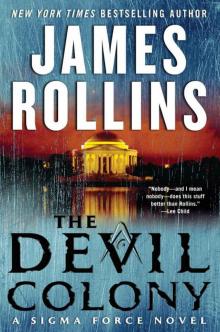 The Devil Colony
The Devil Colony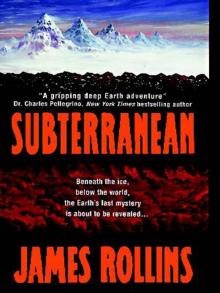 Subterranean
Subterranean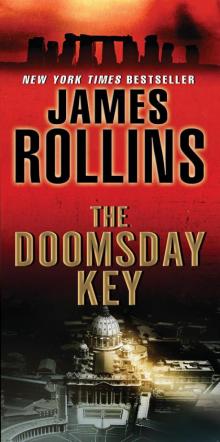 The Doomsday Key
The Doomsday Key The 6th Extinction
The 6th Extinction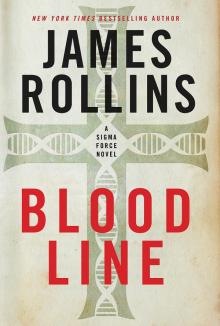 Bloodline
Bloodline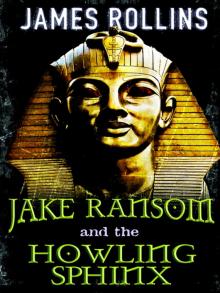 Jake Ransom and the Howling Sphinx
Jake Ransom and the Howling Sphinx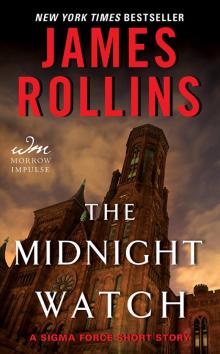 The Midnight Watch
The Midnight Watch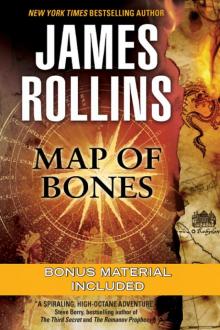 Map of Bones
Map of Bones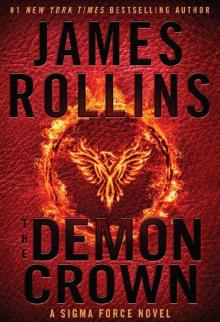 The Demon Crown
The Demon Crown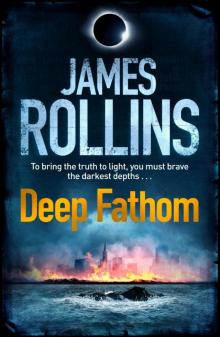 Deep Fathom
Deep Fathom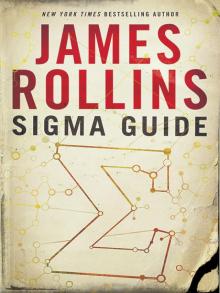 Sigma Guide
Sigma Guide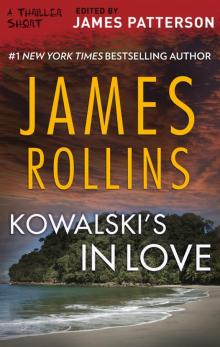 Kowalski's in Love
Kowalski's in Love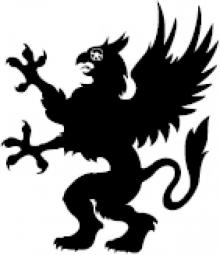 Jake Ransom and the Skull King's Shadow
Jake Ransom and the Skull King's Shadow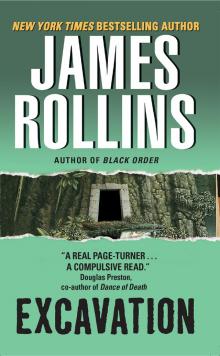 Excavation
Excavation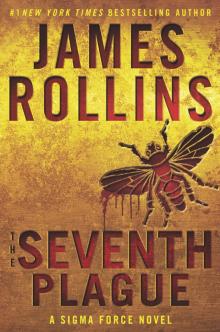 The Seventh Plague
The Seventh Plague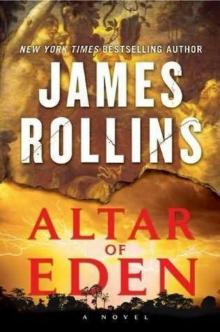 Altar of Eden
Altar of Eden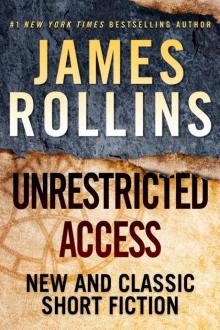 Unrestricted Access: New and Classic Short Fiction
Unrestricted Access: New and Classic Short Fiction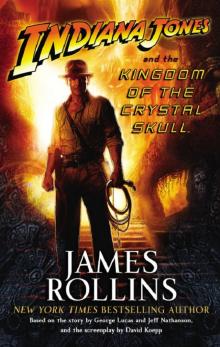 Indiana Jones and the Kingdom of the Crystal Skull
Indiana Jones and the Kingdom of the Crystal Skull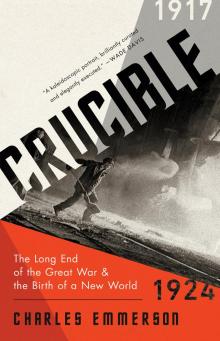 Crucible
Crucible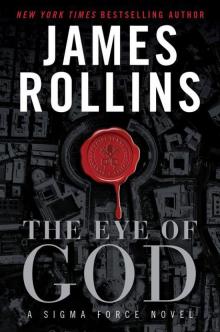 The Eye of God
The Eye of God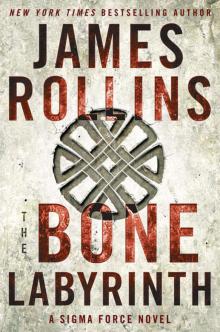 The Bone Labyrinth
The Bone Labyrinth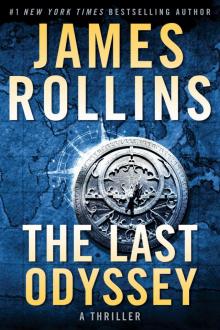 The Last Odyssey: A Thriller
The Last Odyssey: A Thriller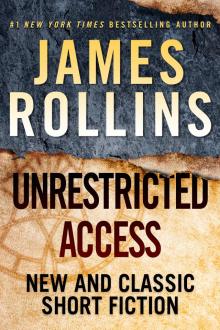 Unrestricted Access
Unrestricted Access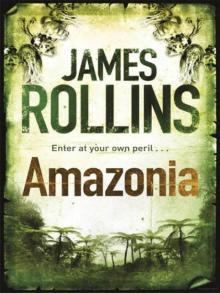 Amazonia
Amazonia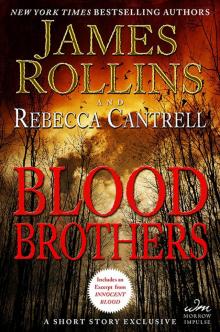 Blood Brothers: A Short Story Exclusive
Blood Brothers: A Short Story Exclusive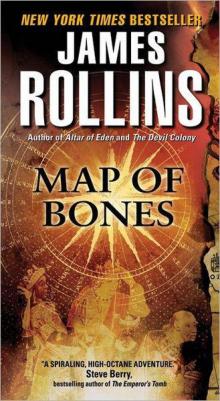 Map of Bones: A Sigma Force Novel
Map of Bones: A Sigma Force Novel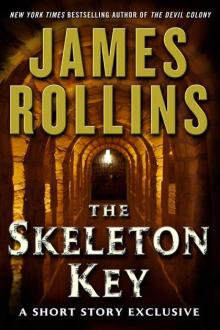 The Skeleton Key (sigma force)
The Skeleton Key (sigma force)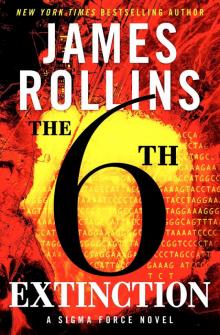 Sigma Force 10 - The Sixth Extinction
Sigma Force 10 - The Sixth Extinction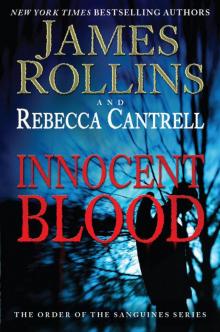 Innocent Blood
Innocent Blood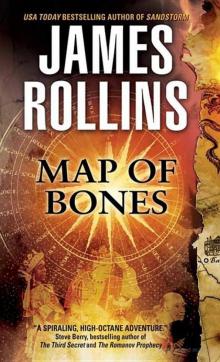 Map of Bones sf-2
Map of Bones sf-2 The Eye of God: A Sigma Force Novel
The Eye of God: A Sigma Force Novel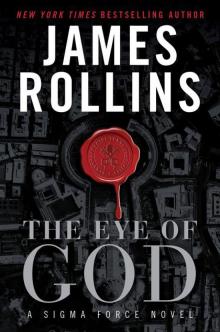 The Eye of God: A Sigma Force Novel sf-9
The Eye of God: A Sigma Force Novel sf-9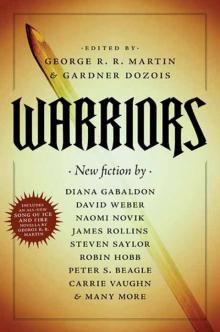 The Pit
The Pit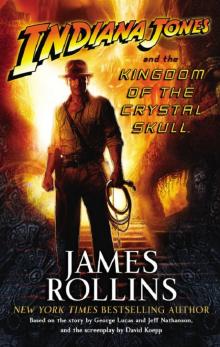 Indiana Jones and the The Kingdom Of The Crystal Skull
Indiana Jones and the The Kingdom Of The Crystal Skull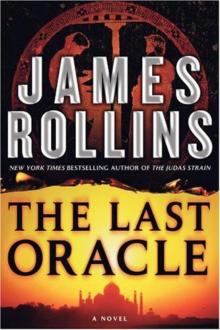 The Last Oracle (2008) sf-5
The Last Oracle (2008) sf-5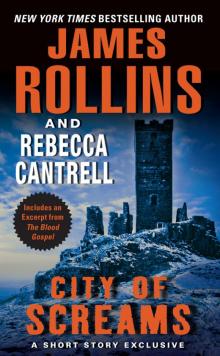 City of Screams
City of Screams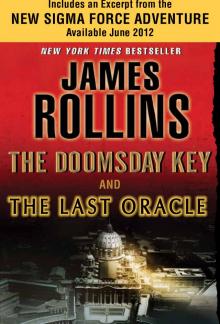 The Doomsday Key and The Last Oracle with Bonus Excerpts
The Doomsday Key and The Last Oracle with Bonus Excerpts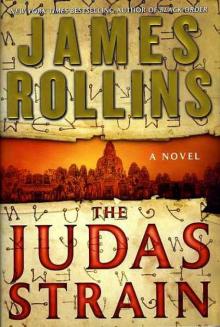 The Judas Strain sf-4
The Judas Strain sf-4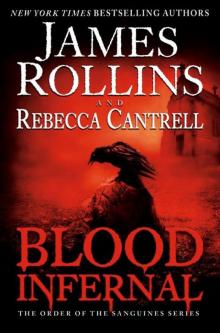 Blood Infernal
Blood Infernal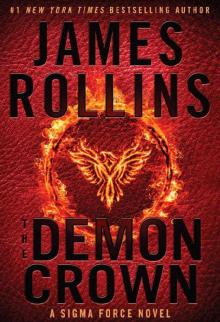 The Demon Crown: A Sigma Force Novel
The Demon Crown: A Sigma Force Novel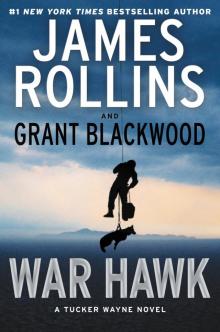 War Hawk: A Tucker Wayne Novel
War Hawk: A Tucker Wayne Novel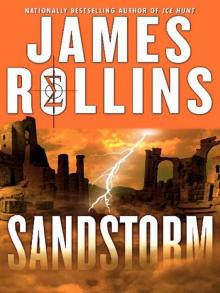 SANDSTORM sf-1
SANDSTORM sf-1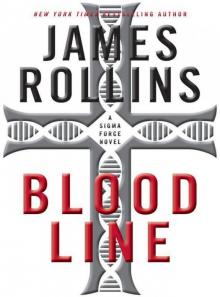 Bloodline: A Sigma Force Novel
Bloodline: A Sigma Force Novel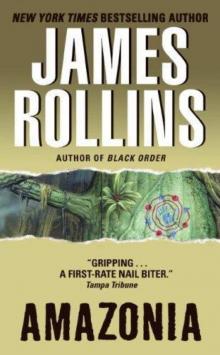 Amazonia: a novel
Amazonia: a novel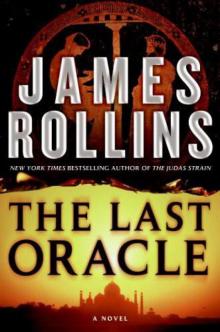 The Last Oracle: A Sigma Force Novel
The Last Oracle: A Sigma Force Novel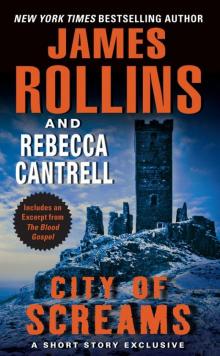 City of Screams (the order of the sanguines)
City of Screams (the order of the sanguines)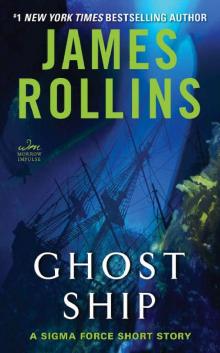 Ghost Ship: A Sigma Force Short Story
Ghost Ship: A Sigma Force Short Story The Doomsday Key: A Sigma Force Novel
The Doomsday Key: A Sigma Force Novel